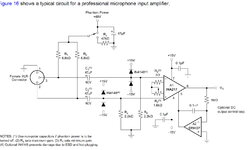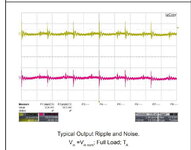hafrse
Full Member level 3
Hello,
I am trying to build a microphone amplifier based on a design given by the manufacturer of the INA217 OP amplifer.
The equipment where this preamplifier will be applied to has only inverted supply: chassis is at 0V and power supply is -10V to the instrument.
The preamplifier uses GND , +15, -15 supply. I have a small power supply inverter board that generates -15v and +15v form a +10v, however, I can connect 0v from the instrument to Vcc of the this inverter and -10 from the instrument to GND of the inverter , I can get -15 and +15 v with respect to the GND of the inverter but I can not connect the GND of the inverter to the instrumnt chassi "GND" since its haigh at 10v and it shorts the inverter Vcc. How can I cope with this problem?
Thanks for any help
I am trying to build a microphone amplifier based on a design given by the manufacturer of the INA217 OP amplifer.
The equipment where this preamplifier will be applied to has only inverted supply: chassis is at 0V and power supply is -10V to the instrument.
The preamplifier uses GND , +15, -15 supply. I have a small power supply inverter board that generates -15v and +15v form a +10v, however, I can connect 0v from the instrument to Vcc of the this inverter and -10 from the instrument to GND of the inverter , I can get -15 and +15 v with respect to the GND of the inverter but I can not connect the GND of the inverter to the instrumnt chassi "GND" since its haigh at 10v and it shorts the inverter Vcc. How can I cope with this problem?
Thanks for any help
Attachments
Last edited:

